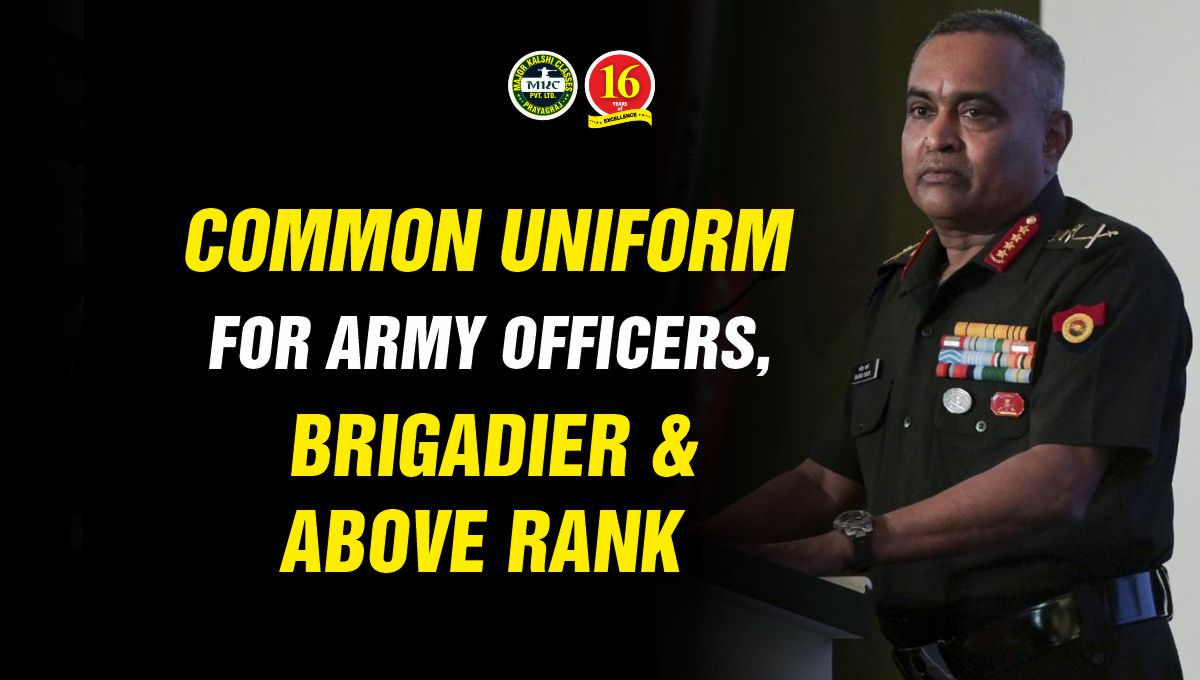Common Uniform for Army Officers, Brigadier and above Rank
In a significant development, the Indian Army recently announced a major change in its uniform policy, specifically for officers holding the rank of Brigadier and above. The decision to introduce a common uniform for Army Officers, especially, senior officers marks a notable step towards streamlining and enhancing unity and cohesion within the Indian Army.
This move is aimed at symbolizing a shared identity and fostering a sense of camaraderie among the higher ranks, while also promoting efficiency and uniformity in appearance. Let’s delve deeper into this ground-breaking decision and its implications for the Indian Army.
The Common Uniform for Brigadiers and Above Rank Army Officers:
Table of Contents
Under the new policy, officers holding the rank of Brigadier, Major General, Lieutenant General, and General will now wear a common uniform. This uniform will feature a modern design, combining elements of the existing officer uniforms, while incorporating new insignias and rank badges. The primary colour of the uniform will remain the traditional olive green, which has long been associated with the Indian Army, symbolizing its connection to the nation and its commitment to national security.
Read More: TA Women Officers on LoC, Territorial Army Women Officers to be posted on LoC
Benefits of this New Uniform Policy:
Enhanced Unity: The introduction of a common uniform for senior officers aims to foster a stronger sense of unity and cohesion within the Indian Army. By eliminating the visual disparities between ranks, it highlights the importance of collective responsibility and teamwork. This move reinforces the idea that, regardless of rank, all officers are part of a unified force working towards a common goal.
Streamlined Logistics: Maintaining multiple uniforms and accessories for different ranks can be a logistical challenge. By standardizing the uniform for senior officers, the Army can simplify logistics, reduce administrative burden, and ensure efficient supply chain management.
Professional Appearance: The common uniform will present a more professional and uniformed appearance for senior officers. This change will help project a strong image of discipline, leadership, and competence both within the Army and to the public.
Read More: Indian Army Salary: Rank wise Indian Army Salary
Adaptation to Modern Times: With the changing dynamics of warfare and the need for agility, adaptability, and interoperability, a common uniform will promote flexibility and unity of purpose across ranks. This move aligns with contemporary military practices worldwide, where a shared uniform is often preferred for higher-ranking officers.
Implementation and Timeline for Common Uniform for Army Officers:
The implementation of the common uniform for Brigadier and above ranks will be a phased process to ensure a smooth transition. The Army plans to conduct extensive consultations with officers and take their feedback into consideration.
The Common Uniform for Army Officers has a new design and specifications will be finalized in collaboration with leading textile and design experts, ensuring durability, functionality, and comfort for officers in various roles and environments. Once the design is approved, manufacturing and distribution processes will be set in motion, followed by training programs to familiarize officers with the new uniform’s features and regulations.
Why New Uniform Policy has been introduced?
The decision to introduce a common uniform for officers of Brigadier and above ranks in the Indian Army marks a significant milestone in its journey towards unity, standardization, and professionalism. This move not only simplifies logistics and enhances the overall appearance of the Army but also reinforces the collective identity and spirit of the Indian Army.
Traditionally, the Indian Army has had a diverse range of uniforms for its officers, varying across different ranks and regiments. Each rank often had its distinct uniform, including unique badges, insignias, and patterns, reflecting the rich history and heritage of the organization.
This diversity had its merits, it also created certain challenges in terms of logistics, maintenance, and the overall professional outlook of the Army. Recognizing these factors, the Army leadership embarked on a journey towards a more unified and standardized approach to officer uniforms.








